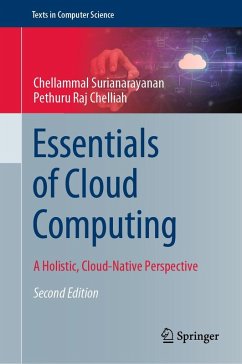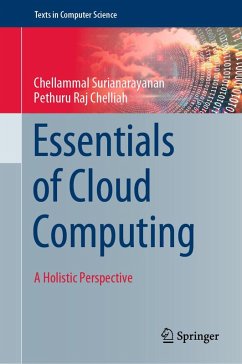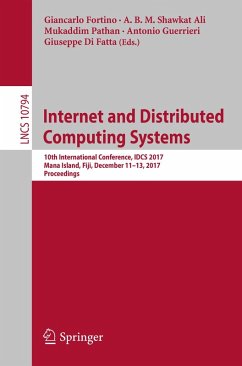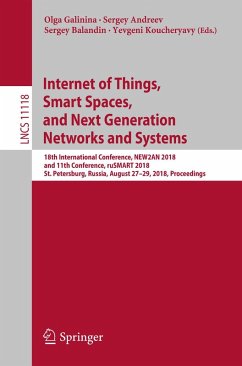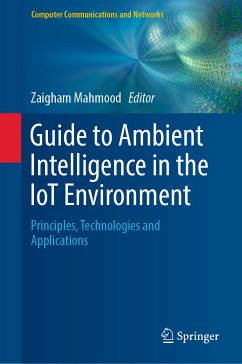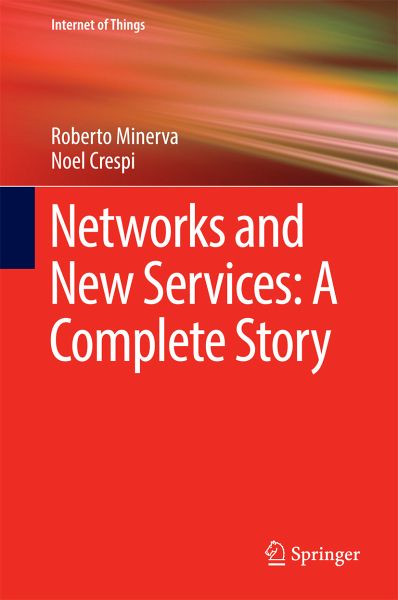
Networks and New Services: A Complete Story (eBook, PDF)
Versandkostenfrei!
Sofort per Download lieferbar
Weitere Ausgaben:

PAYBACK Punkte
40 °P sammeln!





Paints a clear picture of the radical technological developments and challenges that the telecom sector is going through
Defines service architecture with a user-centric approach
Highlights the importance of software over communication
Defines service architecture with a user-centric approach
Highlights the importance of software over communication
Dieser Download kann aus rechtlichen Gründen nur mit Rechnungsadresse in A, B, BG, CY, CZ, D, DK, EW, E, FIN, F, GR, HR, H, IRL, I, LT, L, LR, M, NL, PL, P, R, S, SLO, SK ausgeliefert werden.
Noël Crespi holds Masters degrees from the Universities of Orsay and Canterbury, a Diplome d'ingénieur from Telecom ParisTech and a Ph.D and Habilitation from Paris VI University. From 1993-95 he worked at CLIP, Bouygues Telecom, before joining France Telecom R&D in 1995 where he was involved in Intelligent Network paradigms for value added services. For Orange he led the Mobicarte prepaid service project to define, architect and deploy an infrastructure that hosted more than 10 million mobile subscribers. He has played a key role in standardisation as a delegate in a number of committees and as the editor for CAMEL, the Intelligent Network standard for mobile networks. He was appointed as the coordinator for France Telecom's standardisation activities for Core Network and then for all GSM/UMTS standards at the ETSI plenary committee. In 1999, he joined Nortel Networks as telephony programme manager for France and Middle East-Africa. He was responsible for the evolution of the switching area, and led key programmes for the evolution of Nortel products. He has also worked for ETSI as an independent contractor. He joined Institut Mines-Telecom in 2002 and is currently Professor and MSc Programme Director, leading the Service Architecture Laboratory. He coordinates the standardisation activities for Institut Telecom at ETSI, 3GPP and ITU-T. He is also adjunct professor at KAIST (Korea), and is on the 4-person Scientific Advisory Board of FTW (Austria). His current research interests are in Service Architectures, Communication Services, Social Networks, and Internet of Things/Services. He is the author/co-author of 250 articles and contributions in standardisation
Roberto Minerva, has a Master Degree in Computer Science from Bari University, Italy, and a Ph.D in computer Science and Telecommunications from Telecom Sud Paris, France. Roberto is the head of Innovative Architectures group within the Future Centre in the Strategy Department of Telecom Italia. His jobis to create advanced scenarios derived from the application of emerging ICT technologieswith innovative business models especially in the area of IoT, distributed computing, programmable networks and personal data. He held many responsibilities within Telecom Italia Lab: Network Intelligence, Wireless Architecture and Business Services Area Manager.Roberto is also a contract Professor at Turin's Polytechnics teaching a course on mobile services. Roberto is the Chairman of the IEEE IoT Initiative aiming at creating within IEEE a large technical community and to leverage the knowledge and skills available within IEEE. Since 1987 he has been involved in the development of Service Architectures for Telecom (TINA, OSA/Parlay and SIP), inactivities related to IMS, and in the definition of services for the Business market (context-awareness, ambient intelligence and automotive). More recently his contribution is in the area of new architectures for the service provision with particular attention to data centric and user centric solutions. Under this perspective he is currently involved in Telecom Italia activities related to Big Data, architecture for IoT, and ICT technologies for leveraging Cultural Heritage.
Roberto Minerva, has a Master Degree in Computer Science from Bari University, Italy, and a Ph.D in computer Science and Telecommunications from Telecom Sud Paris, France. Roberto is the head of Innovative Architectures group within the Future Centre in the Strategy Department of Telecom Italia. His jobis to create advanced scenarios derived from the application of emerging ICT technologieswith innovative business models especially in the area of IoT, distributed computing, programmable networks and personal data. He held many responsibilities within Telecom Italia Lab: Network Intelligence, Wireless Architecture and Business Services Area Manager.Roberto is also a contract Professor at Turin's Polytechnics teaching a course on mobile services. Roberto is the Chairman of the IEEE IoT Initiative aiming at creating within IEEE a large technical community and to leverage the knowledge and skills available within IEEE. Since 1987 he has been involved in the development of Service Architectures for Telecom (TINA, OSA/Parlay and SIP), inactivities related to IMS, and in the definition of services for the Business market (context-awareness, ambient intelligence and automotive). More recently his contribution is in the area of new architectures for the service provision with particular attention to data centric and user centric solutions. Under this perspective he is currently involved in Telecom Italia activities related to Big Data, architecture for IoT, and ICT technologies for leveraging Cultural Heritage.
Produktdetails
- Verlag: Springer International Publishing
- Seitenzahl: 186
- Erscheinungstermin: 29. September 2016
- Englisch
- ISBN-13: 9783319339955
- Artikelnr.: 46972528
Für dieses Produkt wurde noch keine Bewertung abgegeben. Wir würden uns sehr freuen, wenn du die erste Bewertung schreibst!
Eine Bewertung schreiben
Eine Bewertung schreiben
Andere Kunden interessierten sich für



